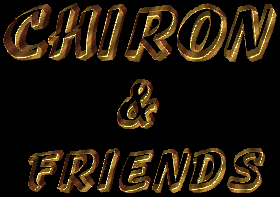Orbital Elements, plus astronomical ephemeris in
R.A. and Declination, for the Centaurs:
And here are the orbital elements for:
Here is a table showing the orbital elements of TNOs, SDOs, and Centaurs:
Drawings of the Centaurean orbits, showing how each relates to the other bodies of our solar system, and including the distance from the Centaurean body to the Earth, and the Sun. Orbital drawings show the bodies for January 2006. (All images calculated by this N.A.S.A. Minor Planet Orbit Plotter):
And here are orbital drawings of a few other bodies, again showing the bodies in January 2006:
The Centaurs are orbit crossers. For an excellent chart showing when each Centaur crosses the orbit of a major planet, go to Orbit Crossings
To discover when each Centaur has been closest to the Sun (perihelion) and furthest away (aphelion), check out Perihelia & Aphelia
The station dates (2000-20200 of a few Centaurs, Asbolus, Chariklo, Elatus, Okyrhoe, Pholus and Nessus, can be found at Stations
For the more technically minded, these sites have hundreds of links to scientific papers about the various Centaurs:
The Centaurs are part of a whole slew of distant minor planets, which include cubewano's (like 15760) and plutino's (like 1993 RO). You can find the most updated list of all of these bodies at this MPC site
And here is an interesting article about the bodies past Neptune/Pluto: Trans-Neptunian's
Mike Brown, one of the discovers of Eris, Sedna, Orcus and Quaoar has a webpage well worth exploring: Mike Brown's page
Chad Trujillo, co-discoverer with Mike Brown and David L. Rabinowitz of many bodies out past Pluto, also has a webpage: Chad Trujillo's page

